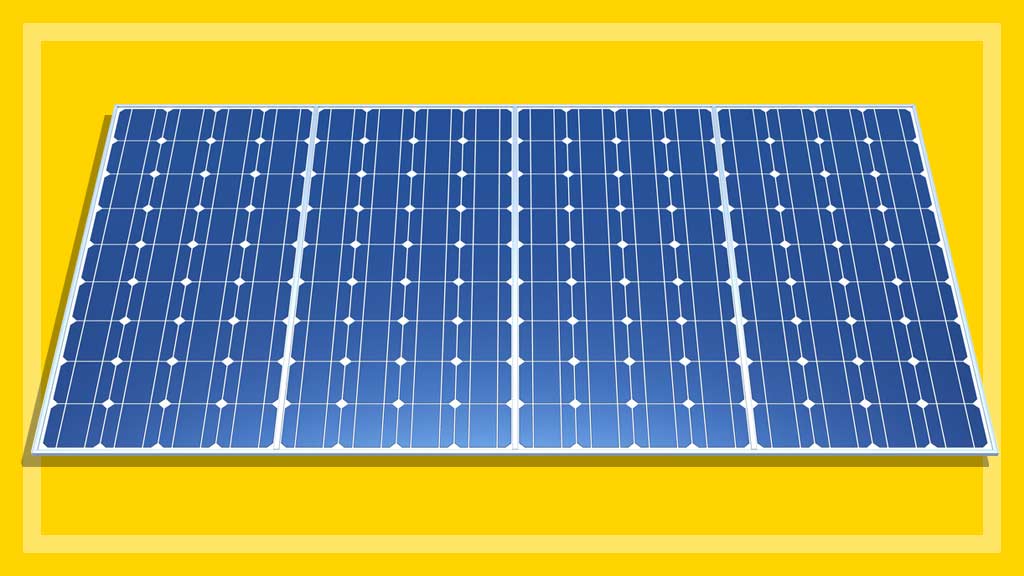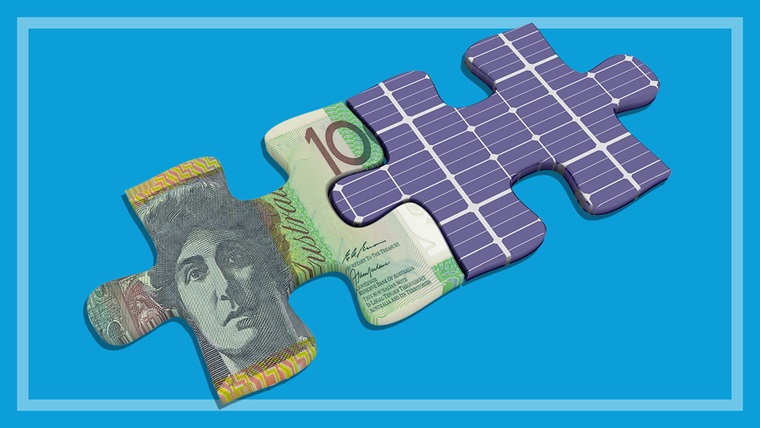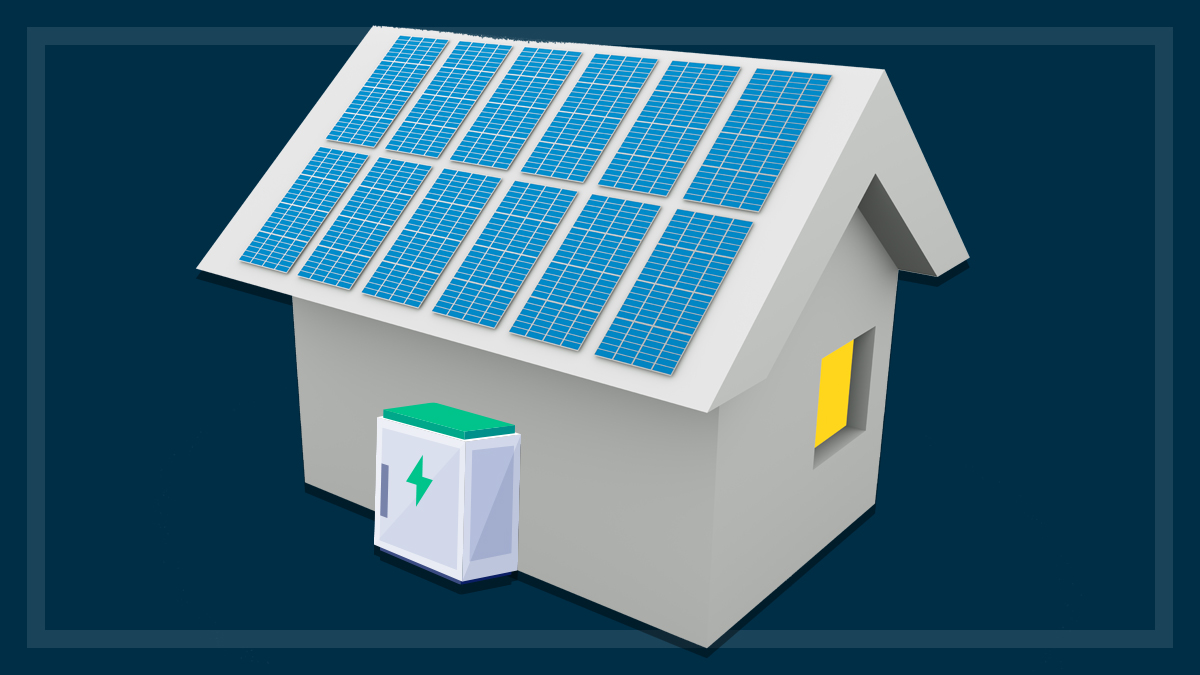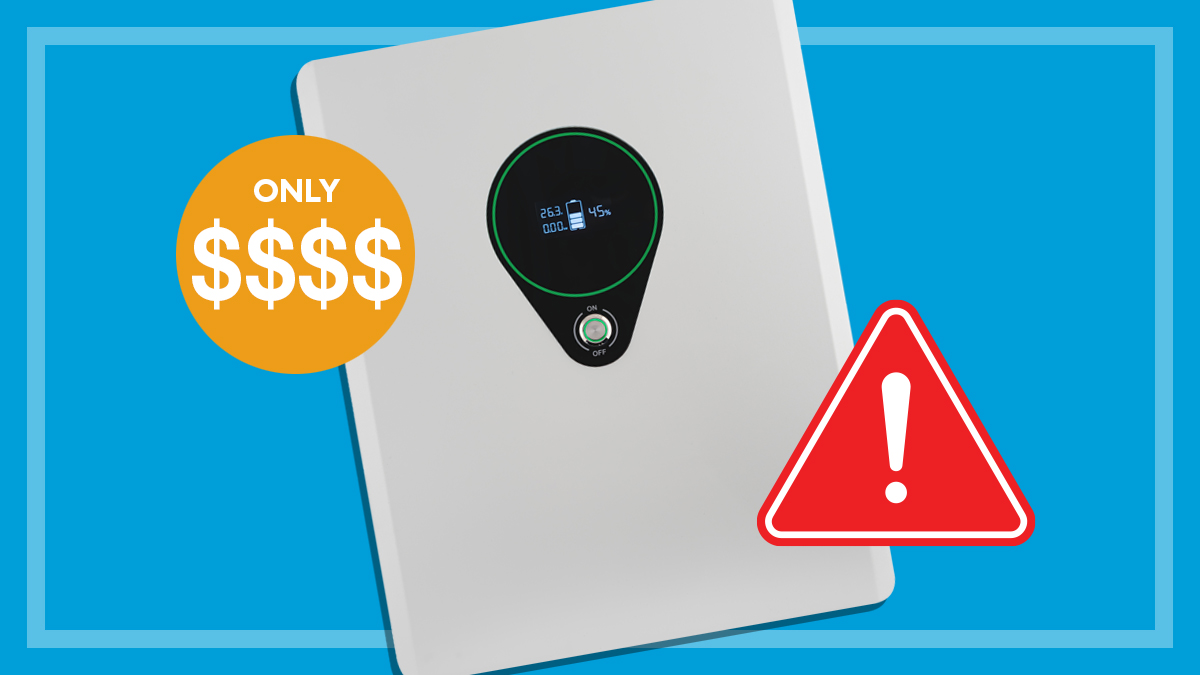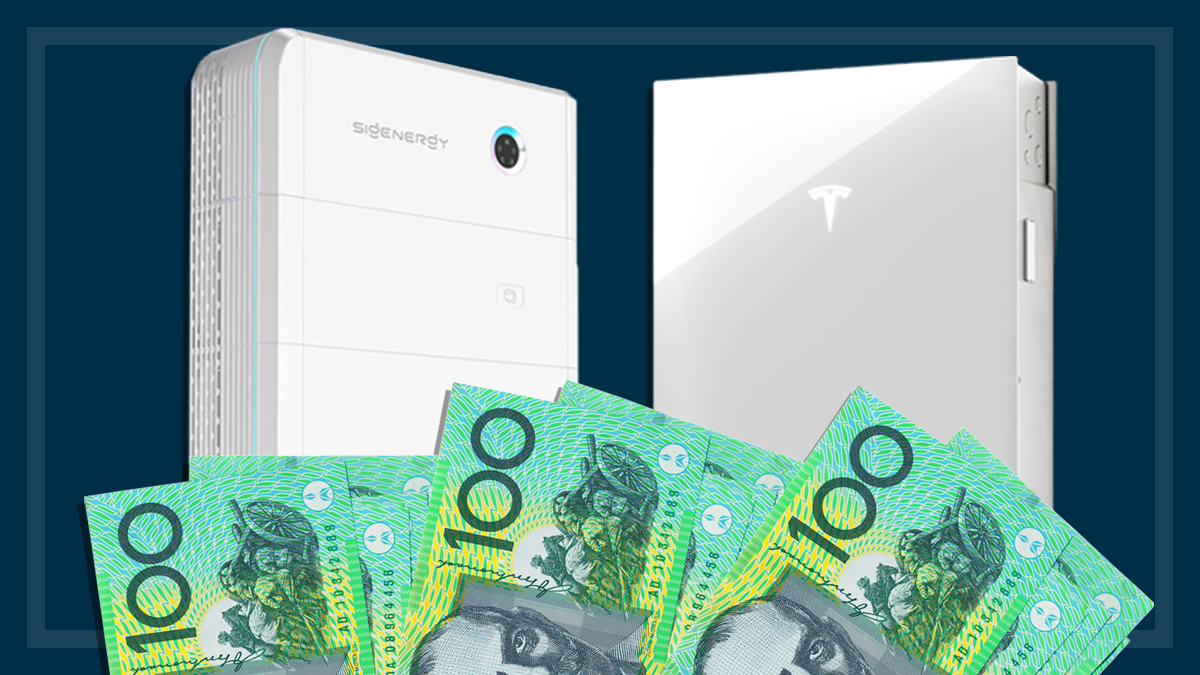Get our independent lab tests, expert reviews and honest advice.
How to size your solar panel system and maximise your electricity savings
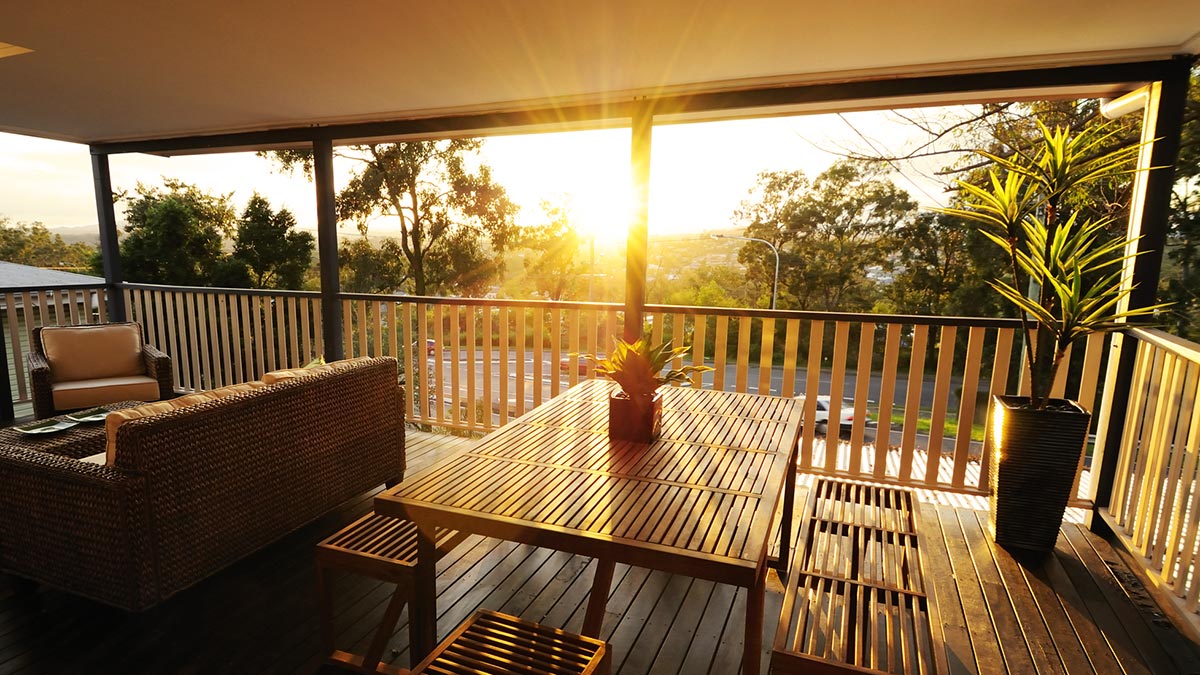
Need to know
- To size your solar panel system you need to work out how much electricity you use and when you use it
- 6.6kW systems are a popular choice, but consider going bigger if you can
- The number of panels is not the key factor; it’s all about the system’s overall capacity
On this page:
- Understanding your electricity usage
- Calculating the size of your solar PV system
- How big should your solar PV system be?
- Grid-connected vs off-grid systems
- Installation considerations
Before you can soak up the sun’s free energy, you’ll have to tackle one big question: what size solar panel system does your home need?
Get it right, and you’ll enjoy free electricity and greatly reduced power bills. Get it wrong, and you could overspend on the job or under-power your home’s needs.
The size or capacity of a solar photovoltaic (PV) system is the maximum electricity output the system can deliver. People often think about their solar PV system in terms of how many panels it has. But let’s clear something up: it’s not so much about the number of solar panels, it’s about the overall capacity of the system.
Get it right, and you’ll enjoy free electricity and greatly reduced power bills
Your system might have 15 x 440W panels, or 16 x 415W panels – in either case, it adds up to about 6600W (6.6kW) and that’s the number that really matters.
It’s also essential to get the panels installed by a qualified professional, an issue that requires even more of your attention when government subsidies are on offer.
To help you navigate the complex, tech-heavy world of solar panels, our guide walks you through understanding your electricity use and finding the solar sweet spot for your home.
Why we've partnered with SolarQuotes
We've partnered with SolarQuotes to help you find and buy the right solar, battery, heat pump and EV charger. While we make money if you use SolarQuotes to find an installer, this doesn't influence our ratings. 100% of the money we make goes directly back into our nonprofit mission.
Understanding your electricity usage
You can’t correctly size your solar PV system unless you know how much electricity your home uses now, and how much you might use in future.
The easiest way to figure this out is to look at past electricity bills, which should tell you how much power you’ve used in the previous month or quarter. Then you can figure out the average daily usage.
This is even easier if you have a smart meter installed – you should be able to see your daily usage either on the bill or by checking your account online.
Consumption can vary considerably, depending on the number of people living in the home, the area it’s in, whether gas is used for cooking or hot water…
Your power consumption is measured and billed in kilowatt-hours (kWh). A typical Australian home uses 15–20kWh per day, but consumption can vary considerably, depending on the number of people living in the home, the area it’s in, whether gas is used for cooking or hot water, and many other factors.
For example, a single-person home will typically use about 8–12kWh per day on average, while a household of five people with a pool could use 30–40kWh per day.
Time of day and seasonal usage
It’s important to consider when you use electricity. Is your home generally empty during weekdays, with everyone at work or school, so that your main power consumption occurs at night?
If so, your solar panels might not be used most effectively, as it’s better to use the generated power during the day (or use it to charge a storage battery) than export it to the grid.
Also consider whether some days are more power-hungry that others – the weekend, for instance, when everyone is at home. And do you use more power in summer running air conditioners, or in winter when you’re running heaters?
Put all this together and you should have a good understanding of how much power you usually use each day, how much you use on peak days, and the times of day you use the most power.
Future usage
Your solar PV system is hopefully going to be on your roof for many years to come, so it’s smart to anticipate how much electricity you’ll likely need in the future too. Some future needs to consider are:
- working from home more often, and therefore using more electricity at home
- planning to start or grow your family
- adding a swimming pool (pool pumps can use a lot of power)
- switching from gas hot water and cooking to electric (a good idea in any case if you’re getting solar)
- getting an electric vehicle (EV)
- improving the home’s resale value.
Don’t worry, you don’t need a crystal ball for this. The simple solution is to put on as big a system as you can reasonably afford right now, as we discuss later. And it can be possible in many cases to upgrade or expand your solar PV system in the future.
Calculating the size of your solar PV system
Now you know how much power you typically use, the next question is what capacity will your solar PV system need to be to cover it?
First, we’re assuming you’ll have a grid-connected system. This is by far the most common type and it simply means you have solar panels generating electricity during the day, and a grid connection to supply electricity when the solar panels aren’t generating enough (at night, for example). See grid-connected vs off-grid below for more.
How much electricity can you expect per kW of solar panels?
Solar PV systems are rated in watts (W) or kilowatts (kW). You’ll see systems described as 4kW, 5kW, 10kW and so on. (See terminology for the difference between a kilowatt – how the solar PV system is rated – and a kilowatt-hour, the unit by which your consumption is measured and billed.)
For each kW of solar panels, you can expect about 4kWh per day of electricity generation. So a 6.6kW solar system will generate about 26.4kWh on a good day (which would mean plenty of sunshine but not too hot).
For each kW of solar panels, you can expect about 4kWh per day of electricity generation
It’s just a general rule – the actual amount of electricity generated per kW of solar panels depends on your location, the time of year and the amount of sunlight you’re getting, the quality of the system, the orientation of the panels, how old they are, and so on.
In southern regions such as Hobart it could be as low as 3.5kWh per day, while the same 1kW of panels in Darwin could generate 5kWh.
How big should your solar PV system be?
Your minimum aim is to cover as much of your household consumption as reasonably possible for a typical day.
If your power consumption is 30kWh on some days, for example, but on most others it’s 20kWh, it might not be worth adding extra panels just to cover those few 30kWh days.
You could go with a 5kW solar PV system and just accept paying for more power than usual from the grid on those occasional high-consumption days.
But solar panels are relatively cheap now, and there’s an economy of scale in installing a larger system, so it’s worth talking this through with your installer to consider how big a system you could get.

Many solar PV systems installed in 2025 are 6.6kW in size and we wouldn’t recommend going any smaller than that. Bigger systems of 8–10kW or more are becoming common, especially for systems that include a home storage battery.
You might think it’s better to oversize your system because any excess will be exported to the grid, and you’ll be paid for it via the feed-in tariff. But the feed-in tariff for new solar PV systems is generally very low – typically from four to eight cents per kWh (though you can sometimes get better deals). On its own, the feed-in tariff is unlikely to justify the cost of a larger system.
On its own, the feed-in tariff is unlikely to justify the cost of a larger system
The real benefit of a larger system is that it will be easier to add a battery, take full advantage of your inverter’s capacity, and simply to generate more power throughout the day so that you’re less likely to need grid power.
You’re also future-proofing your home for the day when you might have an electric vehicle to charge, or a bigger family at home. And any excess power that you’re sending into the grid will mean there’s more solar-sourced electricity in the system for other homes to use.
Power usage shifting
Since you’re looking at saving on power costs by installing solar, it makes sense to maximise your use of that solar power. So as much possible, your electricity consumption should happen during the day when the panels are generating.
Likewise, minimise your power consumption at night. Night-time power is going to come from the grid, which is relatively expensive. Alternatively, night-time usage will come from your storage battery if you have one, and you won’t want to drain that any faster than you need to.
As much possible, your electricity consumption should happen during the day when the panels are generating
So consider running your dishwasher and washing machine during the daytime, using a timer or ‘delay start’ function if they have one.
Likewise, try to use air conditioners and heaters during daylight, and again consider using timer functions. This can reduce the amount you need to run them during the evening.
Online calculators
Online ‘solar calculators’ can help you work out the size of solar system you need. The CHOICE Solar Estimator is a straightforward tool to calculate the size of a solar panel system suitable for your home, and it can also help connect you to installers in your area to get quotes.
However, some solar calculators focus on aspects other than system sizing, such as payback times, cost of finance and so on – all potentially useful but it might not be the information you’re looking for.
Grid-connected vs off-grid systems
Grid-connected
By far the most common type in Australia, these systems have solar panels and an inverter, and are connected to the main electricity grid.
The solar panels supply power during the day, and the home generally uses the solar power first before resorting to electricity from the grid.
The grid connection is used to supply power at night (assuming there’s no storage battery connected) and at other times when the solar panels can’t generate enough power, such as on low-sunlight days.
Off-grid
This type of system is completely standalone from the main grid. All the home’s power comes from solar panels, and possibly some other types of power generation as well, such as wind.
These systems almost always use storage batteries to capture unused power from the solar array, for use at night and on low-sunlight days. They often also have a diesel-powered generator for back-up in extended periods of low sunlight and when there’s a sudden high demand for power (such as when a pump starts up).
Off-grid systems are usually more complex and expensive than grid-connected systems
Off-grid systems are usually more complex and expensive than grid-connected systems. They need more solar capacity than a typical grid-connected system, and may also need inverters capable of higher loads to cope with peak demands.
Homes that run off-grid need to be particularly energy-efficient and the load demand needs to be managed well throughout the day.
Off-grid systems generally only make sense for remote properties where a grid connection isn’t available or would be prohibitively expensive to install. They should be designed and installed by a supplier with particular expertise in this type of system.
Installation considerations
Roof space
Most freestanding houses will have enough roof area to support however many panels the home needs. Factors that might reduce your available roof area include heavily shaded sections and roofs with unusual pitch. Solar panels are mounted on brackets to ensure correct angling and air circulation, so installers can usually find a way to make most roof spaces work well.
Orientation
It’s usually best to have the panels facing north, to maximise the amount of sunlight that falls on them. But that’s not always possible and it’s not essential. North-east or north-west are often just as good. Your installer should be able to work out the best orientation for your panels given your location, roof space and household needs.
Sometimes a mix of east- and west-facing panels can work best – this may give a slightly lower amount of power generation in the middle of the day, but will produce more in the morning and late afternoon compared to a north-facing array. If you tend to use more power at those times, this orientation might make more sense.
Your installer should be able to work out the best orientation for your panels given your location, roof space and household needs
And don’t despair if your only available roof space faces south – south-facing panels can still produce about 80% of their rated power.
Plus, if you already have north-facing panels, you can always expand your solar PV, or add a separate system, on the southerly aspect. Solar panels are cheap enough that this can make economic sense, but you may want to put on a few more panels in the south-facing array to make up for the reduced production.
Talk to installers
It’s not always easy to calculate exactly how much capacity you’ll need for your solar panels, or how much you’ll actually be able to fit on your roof. So while this article will help you do your homework, in the end you should still talk to at least a couple of solar installers to get a detailed quote.
A good installer will work with you to figure out your home’s power usage and the right sort of solar system to suit both your power needs and the roof space you have available.
Inverters
The inverter is a key part of the solar PV system – it’s the box on the wall (or sometimes the roof) that takes the electricity generated by the solar panels in direct current (DC) and converts it to alternating current (AC) for your household circuits to use in powering your fridge, TV, lights and so on.
The inverter size must match the solar PV array’s size. Basically, if you have 6.6kW of panels on the roof, you’ll need an inverter capable of handling the potential maximum output of the panels; in this case, 6.6kW.
However, panels rarely, if ever, deliver their maximum rated output, due to variable sunlight conditions, loss of efficiency as the panels age, reduced efficiency in extreme heat and so on.
So you can actually get away with a smaller capacity inverter compared to the solar PV array – this is sometimes referred to as oversizing the array or overclocking the inverter.
You can actually get away with a smaller capacity inverter compared to the solar PV array
For a 6.6kW system, a 5kW inverter will actually work just fine, because the panels will more usually be delivering output closer to that level. It also means the inverter is working at its intended performance level more often. And a 5kW inverter will be a bit cheaper than a 6.6kW inverter.
On the very rare times that the panels deliver more power than the inverter can manage, the excess is simply lost (“clipped”) but it’s not likely to be enough to be worth worrying about.
An alternative to a single inverter unit is to have micro-inverters, where each panel has its own small inverter attached. These are usually more expensive, and have some technical pros and cons.
Should you get a home battery?
A storage battery will capture the unused solar power generated during the day, for use at night and on low-sunlight days. Installations that include batteries are increasingly popular.
From July 2025, the federal government’s $2.3 billion Cheaper Home Batteries Program rebate offers around 30% off the total cost of installing a battery in eligible homes and small businesses. Read our in-depth guide to the rebate, battery prices and estimated payback times.
The new federal rebate and improving technology means batteries are becoming a more viable option
Previously due to its price, a battery didn’t make economic sense yet with the payback time often longer than the warranty period (usually ten years). However, the new federal rebate and improving technology means batteries are becoming a more viable option.
Our solar battery buying guide explains battery costs and how they might work out for your home.
Solar batteries and blackouts
Just remember: for most grid-connected systems, having a battery doesn’t necessarily protect you in the event of a blackout. You may still lose all power to your home, despite having solar panels producing power and a charged battery ready and waiting.
This is because grid-connected systems have what’s known as “anti-islanding protection”. During a blackout, the grid and any engineers working on the lines must be protected from “islands” of electricity generation (such as your solar panels) pumping power unexpectedly into the lines.
You may still lose all power to your home, despite having solar panels producing power and a charged battery ready and waiting
For most solar PV systems, the simplest way to provide anti-islanding protection is to shut down entirely. So, when it senses a grid blackout, your solar PV system shuts down and you have no household power at all.
More sophisticated inverters can provide anti-islanding protection during a blackout, but still keep the solar panels and battery operating so that the house has some power. But expect to pay a fair bit more for such a system, as the hardware is more expensive and you may need more solar and battery capacity than you think to run the house for a few hours during a blackout.
Terminology
Watt (W) and kilowatt (kW): A unit used to quantify the rate of energy transfer. One kilowatt = 1000 watts. With solar panels, the rating in watts specifies the maximum power the panel can deliver at any point in time.
Watt-hours (Wh) and kilowatt-hours (kWh): A measure of energy production or consumption over time. The kilowatt-hour (kWh) is the unit you’ll see on your electricity bill, because you’re billed for your electricity usage over time. A solar panel producing 300W for one hour would deliver 300Wh (or 0.3kWh) of energy.

